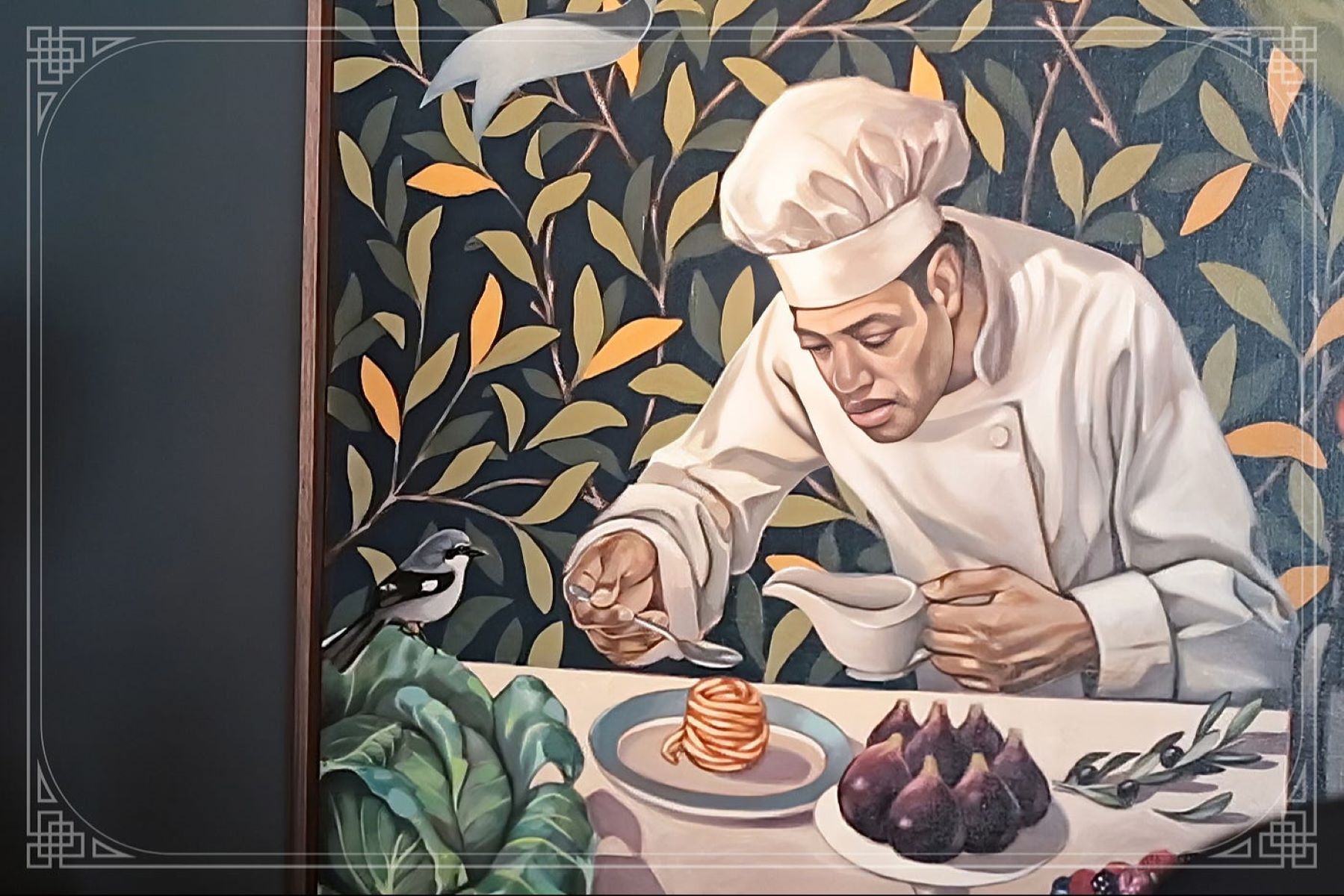
Who was James Hemings? James Hemings was an African-American chef and culinary innovator. Born into slavery in 1765, he became the first American to train as a chef in France. Hemings was owned by Thomas Jefferson, who took him to Paris in 1784. There, he mastered French cuisine and brought back techniques that transformed American cooking. Hemings introduced dishes like macaroni and cheese, crème brûlée, and French fries to the United States. Despite his talents, his life was marked by the struggles of slavery and freedom. James Hemings' legacy continues to influence American culinary traditions today.
Key Takeaways:
- James Hemings, a talented chef and former slave, revolutionized American cuisine by introducing French cooking techniques and popularizing dishes like macaroni and cheese and crème brûlée.
- Despite facing struggles and negotiating his freedom, James Hemings' legacy continues to inspire future generations, highlighting the resilience and talent of enslaved individuals in shaping American history.
Early Life and Background
James Hemings was an extraordinary figure in American history, known for his culinary skills and unique life experiences. Let's delve into some fascinating facts about his early life and background.
- Born in 1765, James Hemings was the son of Elizabeth Hemings, an enslaved woman, and John Wayles, a wealthy planter.
- Hemings was the older brother of Sally Hemings, who later became known for her relationship with Thomas Jefferson.
- At the age of eight, James Hemings became the property of Thomas Jefferson through inheritance.
- Hemings grew up at Monticello, Jefferson's plantation in Virginia, where he began his journey in the culinary arts.
Culinary Training in France
James Hemings' culinary journey took a significant turn when he traveled to France with Thomas Jefferson. Here are some intriguing facts about his time in France.
- In 1784, Hemings accompanied Jefferson to Paris, where he trained as a chef.
- Hemings studied under some of the finest French chefs, mastering the art of French cuisine.
- He became the first American to train as a chef in France, a remarkable achievement for an enslaved individual.
- Hemings learned to speak French fluently, which helped him navigate his culinary training and life in Paris.
Contributions to American Cuisine
James Hemings played a pivotal role in shaping American cuisine. Here are some notable contributions he made.
- Hemings introduced French cooking techniques and recipes to America, significantly influencing American culinary traditions.
- He is credited with popularizing dishes like macaroni and cheese, crème brûlée, and French fries in the United States.
- Hemings served as the head chef at Jefferson's residence in Paris, showcasing his culinary prowess.
- Upon returning to America, Hemings continued to work as Jefferson's chef, preparing elaborate meals for guests at Monticello.
Struggles and Freedom
James Hemings' life was marked by both struggles and triumphs. Here are some key facts about his journey toward freedom.
- Hemings negotiated his freedom with Jefferson, agreeing to train another chef in exchange for his emancipation.
- In 1796, Hemings was officially freed from slavery, a rare and significant achievement for an enslaved person at the time.
- After gaining his freedom, Hemings continued to work as a chef, though details about his later life remain scarce.
- Tragically, Hemings' life ended in 1801 when he took his own life at the age of 36.
Legacy and Recognition
James Hemings' legacy continues to be celebrated and recognized today. Here are some facts about his enduring impact.
- Hemings' contributions to American cuisine are increasingly acknowledged by historians and culinary experts.
- His story has been featured in books, documentaries, and exhibitions, shedding light on his remarkable life and achievements.
- Monticello, Jefferson's plantation, now includes exhibits and programs dedicated to Hemings and his culinary legacy.
- Hemings' influence on American cuisine is seen in the continued popularity of dishes he introduced, such as macaroni and cheese.
Personal Life and Relationships
James Hemings' personal life and relationships offer a glimpse into the complexities of his experiences. Here are some facts about his personal life.
- Hemings had a close relationship with his sister Sally Hemings, who also lived at Monticello.
- Despite being enslaved, Hemings formed connections with influential figures in Paris, including other chefs and culinary experts.
- Hemings' relationship with Jefferson was complex, marked by both dependence and negotiation for his freedom.
- Little is known about Hemings' romantic relationships, but his life was undoubtedly shaped by the bonds he formed with family and friends.
Influence on Future Generations
James Hemings' impact extends beyond his lifetime, influencing future generations in various ways. Here are some facts about his lasting influence.
- Hemings' culinary techniques and recipes have been passed down through generations, continuing to shape American cuisine.
- His story has inspired chefs and culinary enthusiasts to explore the rich history of African American contributions to food culture.
- Hemings' life serves as a testament to the resilience and talent of enslaved individuals who overcame immense challenges.
- Educational programs and initiatives now highlight Hemings' contributions, ensuring that his legacy is remembered and celebrated.
Rediscovery and Modern Recognition
In recent years, there has been a renewed interest in James Hemings' life and legacy. Here are some facts about his modern recognition.
- Historians and researchers have uncovered new information about Hemings, shedding light on his achievements and struggles.
- Culinary schools and institutions now include Hemings in their curricula, recognizing his role in American culinary history.
- Hemings' story has been featured in popular media, including television shows and podcasts, bringing his legacy to a wider audience.
- Efforts to preserve and share Hemings' recipes have gained momentum, allowing people to experience his culinary creations firsthand.
Impact on African American History
James Hemings' life and legacy hold significant importance in African American history. Here are some facts about his impact.
- Hemings' achievements challenge the narrative of enslaved individuals as solely victims, highlighting their contributions and talents.
- His story underscores the complexities of slavery and the agency of enslaved individuals in negotiating their freedom.
- Hemings' legacy serves as a reminder of the rich cultural heritage and resilience of African Americans throughout history.
The Legacy of James Hemings
James Hemings left a lasting impact on American cuisine. As Thomas Jefferson's enslaved chef, he mastered French cooking techniques and introduced dishes like macaroni and cheese to America. His culinary skills were unmatched, blending French and American flavors in ways that were ahead of his time. Despite his contributions, Hemings' story often goes untold. Recognizing his achievements helps us appreciate the rich, diverse history of American food. Hemings' legacy lives on every time we enjoy a dish he popularized. His life reminds us of the complex history behind our favorite foods. By honoring his contributions, we celebrate the resilience and creativity of those who shaped our culinary heritage. Hemings' story is a testament to the power of food to transcend boundaries and bring people together. Let's remember James Hemings, not just as a chef, but as a pioneer who changed American cuisine forever.
Frequently Asked Questions
Was this page helpful?
Our commitment to delivering trustworthy and engaging content is at the heart of what we do. Each fact on our site is contributed by real users like you, bringing a wealth of diverse insights and information. To ensure the highest standards of accuracy and reliability, our dedicated editors meticulously review each submission. This process guarantees that the facts we share are not only fascinating but also credible. Trust in our commitment to quality and authenticity as you explore and learn with us.


